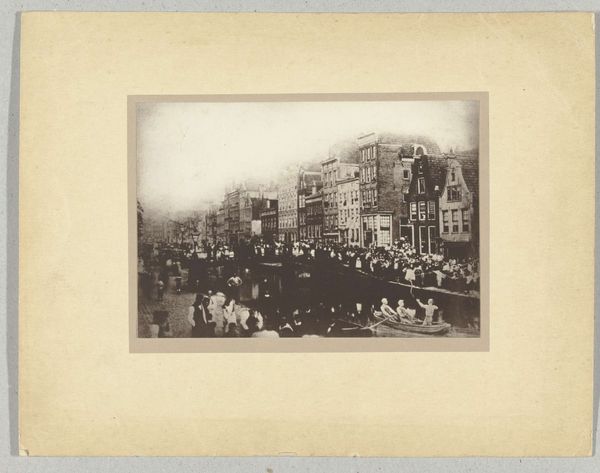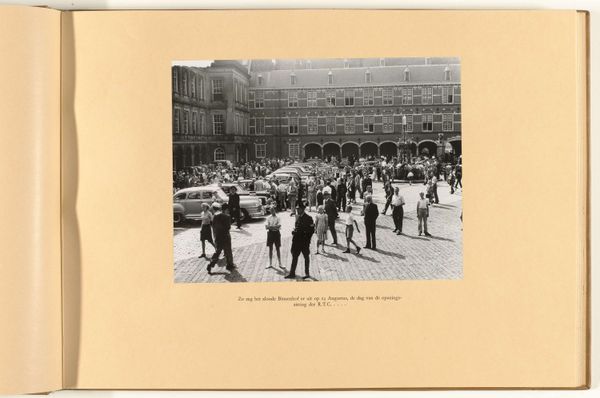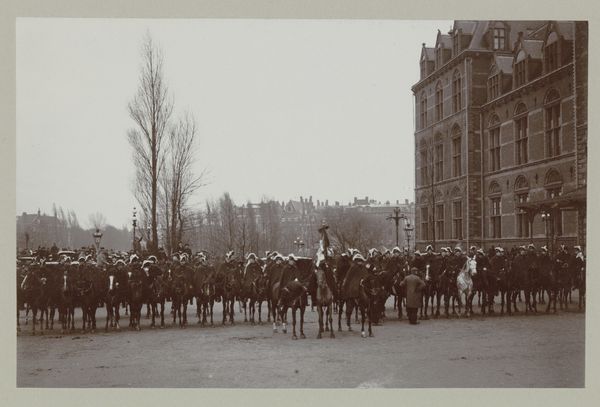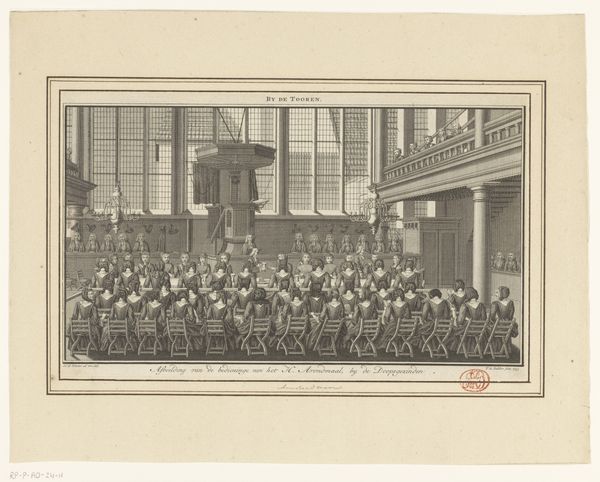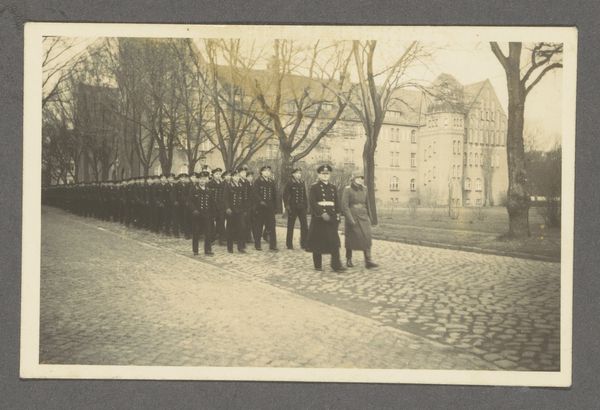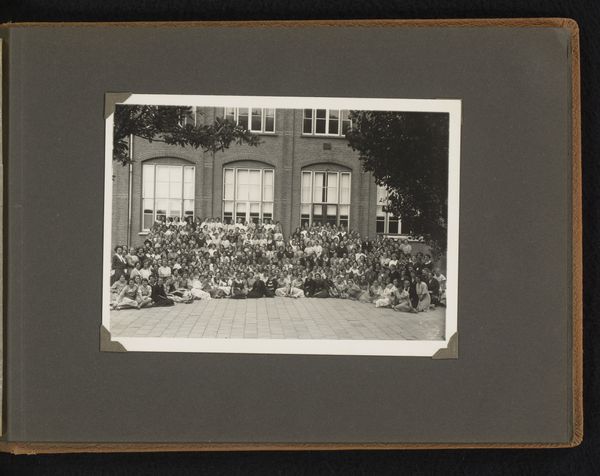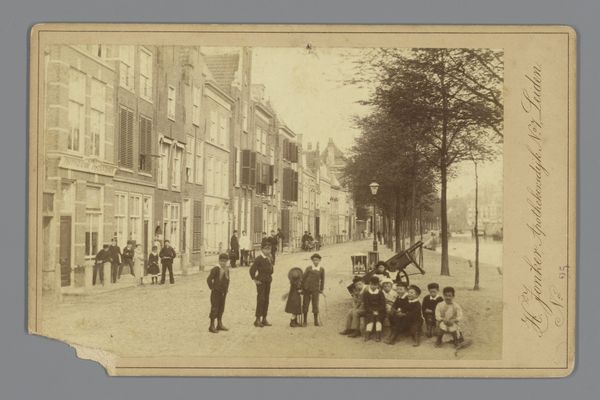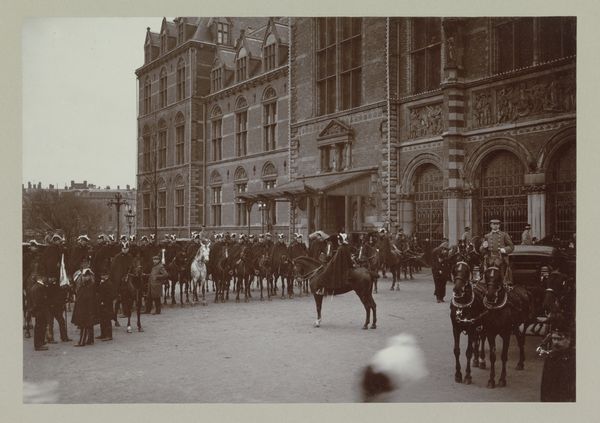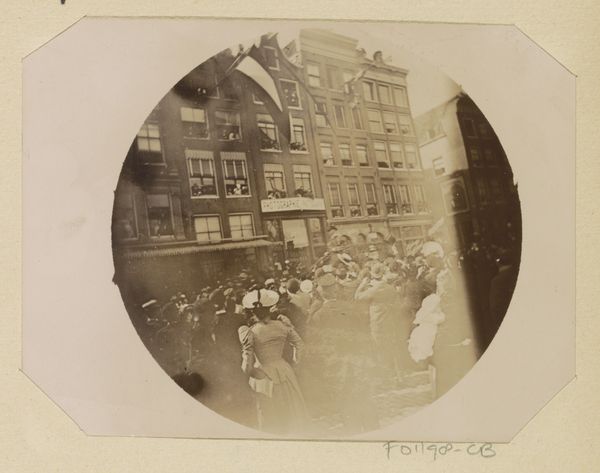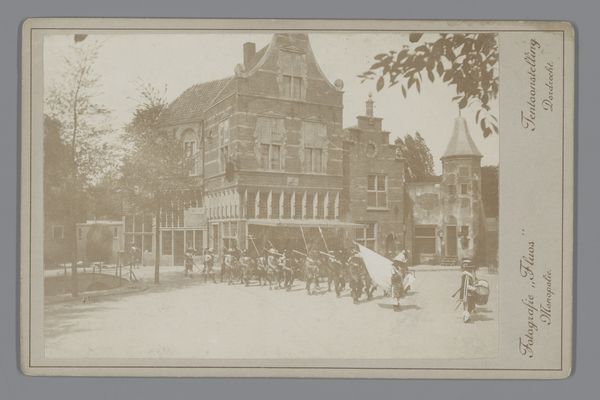
Groepsportret van medewerkers van reclamebureau Julius Dickhout, Amsterdam 1890 - 1920
0:00
0:00
photography, gelatin-silver-print
#
portrait
#
dutch-golden-age
#
photography
#
photojournalism
#
gelatin-silver-print
#
cityscape
Dimensions: height 174 mm, width 225 mm, height 240 mm, width 356 mm
Copyright: Rijks Museum: Open Domain
Curator: Let's delve into this captivating gelatin silver print titled "Groepsportret van medewerkers van reclamebureau Julius Dickhout, Amsterdam." It's dated somewhere between 1890 and 1920, a fascinating snapshot of a specific time and place. Editor: Okay, my first impression? Kind of a melancholic army of advertisers. The sepia tones, the rather rigid poses...it evokes a bygone era, a bit like a sepia-toned dream about selling things. Curator: That's a wonderful interpretation. I'm immediately struck by the potential readings of the photo through the lens of labor studies and the social history of advertising. Look at these men—presumably workers—posed with their advertising carts. We might think about what this image communicates about their identities. Were they proud to be part of this new burgeoning advertising industry or rather objects within it? Editor: I'm with you. It's both a portrait of individuals and of an industry hitting its stride. There's this weird mix of optimism and austerity—the backdrop of those classic Amsterdam canal houses contrasted with the regimented formation of the men...feels a little surreal, no? Curator: Absolutely. Consider the power dynamics inherent in such a posed photograph, particularly around class and labor. Were they coerced or did they consent to this display of uniformity in service of capitalist endeavors? Editor: Coerced seems like a strong word. Still, I do wonder, where's the joy? Where's the humor? If I were one of these folks, I'd probably crack a joke to lighten the mood... Curator: Well, such displays of "joy" or levity may have been viewed differently through the cultural norms of the period, or actively repressed as incompatible with a professional image, perhaps. Still, that supposed "lack" prompts reflections on historical perceptions of working-class people and their assumed emotional registers. Editor: Touché. But that's the fun of it, right? The artist—in this case, the photographer—probably just wanted to capture a company portrait, but we're sitting here decades later mining it for existential truths about advertising! Curator: Indeed, this image offers fertile ground for critical engagement, inviting us to examine historical labor practices and challenge assumptions about representation. It’s so much more than just a vintage photograph, it is a lens through which we scrutinize both then and now. Editor: For me, I am simply left contemplating how the business of persuasion hasn't changed all that much. They sold something then and now. Just a different medium...and much more smiling now I assume.
Comments
No comments
Be the first to comment and join the conversation on the ultimate creative platform.
